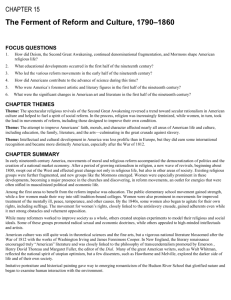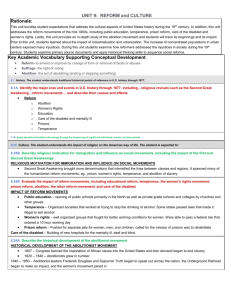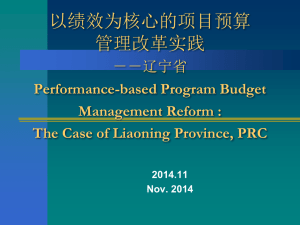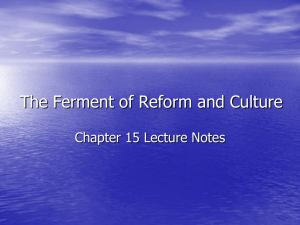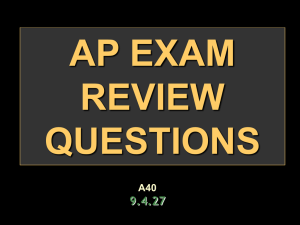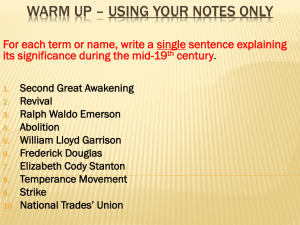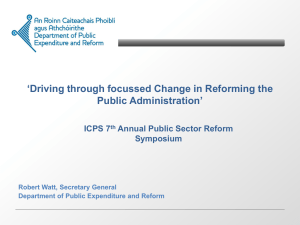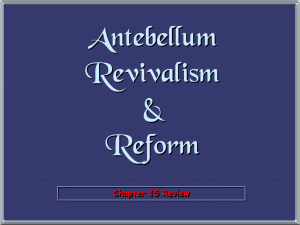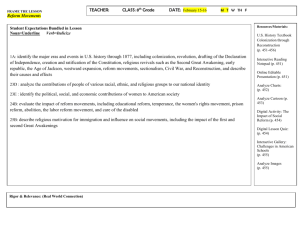File
advertisement
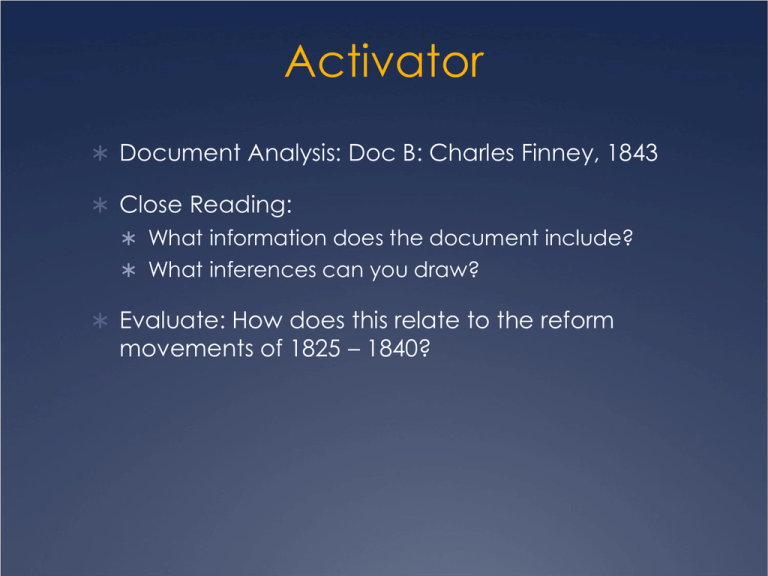
Activator Document Analysis: Doc B: Charles Finney, 1843 Close Reading: What information does the document include? What inferences can you draw? Evaluate: How does this relate to the reform movements of 1825 – 1840? Reform Movements 2002 Form A: To what extent did reform movements of 1825-1840 seek to expand democratic ideals? Key Religions: late 1700’s- early 1800’s Deism Reason rather than revelation Science rather than the Bible Believed in God, but did not believe that God’s will dictated human behavior Unitarians God only existed in one person Jesus lived but was not divine Individual free will: salvation through good work The Second Great Awakening Religion too liberal need for awakening First G.A. (1730’s – 1740’s) reaction to Enlightenment Second G.A. (1790-1840) reaction to Deism, Unitarianism Second Great Awakening: Sin voluntary—no predestination “Born Again” Christians free of sin Evangelical, emotional conversion Destiny in your own hands Large participation of women Reorganized Protestant churches into new sections and branches (e.g. frontier Methodism) A Desert in Zion: Mormonism The Church of Jesus Christ of Latter-Day Saints founded by Joseph Smith 1830 Joseph Smith wrote Book of Mormon 1843 revelation of polygamy Powerful political movement—unified voting bloc 1844 Joseph Smith murdered by mob in Carthage, IL Brigham Young led “pilgrimage” west 1846-47 led Mormons to Utah (Mexican territory until 1848) Great Salt Lake become prosperous frontier society (economic collectivism) Due to polygamy issues, Utah not admitted until 1896 “An Age of Reform” Second Great Awakening inspired Americans to battle evils (via reform movements) Puritan vision of perfected society: no cruelty, war, intoxication, discrimination, slavery Proliferation (vast multiplication) of new churches, denominations reinforced separation between Church and State Encouraged new reform movements: temperance, women’s movements, abolition, education Other changes in society: Prison reform, imprisonment for debt reform, mental health reform Dorothea Dix, mental health reformer Document Analysis Document E: William H. MuGuffrey, Reader, 1836 Close Reading: What information does the document include? What inferences can you draw? Evaluate: How does this relate to the reform movements of 1825 – 1840? Free School Movement Education to instill Protestant-Republican morals, values Focus more discipline than learning “Father” Horace Mann: More schools, longer days, expanded education Noah Webster Dictionary helped standardize the American language Textbooks and readers used by millions of Americans Black slaves in south legally forbidden from learning to read and write Document Analysis Document H: Drunkard’s Progress, 1846 Close Reading: What information does the document include? What inferences can you draw? Evaluate: How does this relate to the reform movements of 1825 – 1840? Temperance and Prohibition Heavy drinking decreased labor efficiency, corrupted the sanctity of the family American Temperance Society (Boston, 1826) Urged drinkers to quit alcohol, organized children’s clubs Neal S. Dow “Father of Prohibition” Maine Law of 1851 prohibited the manufacture and sale of intoxicating liquor, encouraged other states to pass laws Laws openly flouted, later declared unconstitutional, repealed (similar to Prohibition in 1920’s) Document Analysis Document I: Seneca Falls, 1848 Close Reading: What information does the document include? What inferences can you draw? Evaluate: How does this relate to the reform movements of 1825 – 1840? Women in Revolt Industrial Revolution segregated men and women Elizabeth Cady Stanton advocated for women’s suffrage Susan B. Anthony lectured on women’s rights Seneca Falls Convention (1848) Stanton read a “Declaration of Sentiments,” which declared that “all men and women are created equal” Launched the modern women’s rights movement (connect to the Progressive Era, 1890-1920) Transcendentalism Truth “transcends” the senses Every person possesses an inner light that can illuminate the highest truth and put him or her in direct touch with God, or the “Oversoul.” In other words, individuals can have a religious experience on their own. Henry David Thoreau lived in the woods for two years to become one with nature Walden, 1854 On the Duty of Civil Disobedience, 1849—protest of the Mexican American War Disobey unjust laws Influenced Gandhi and MLK Ralph Waldo Emerson: Advocated self-reliance and self-improvement Processing 2002 DBQ form A: “Reform movements in the United States sought to expand democratic ideals.” Assess the validity of this statement with specific reference to the years 1825 – 1850.
